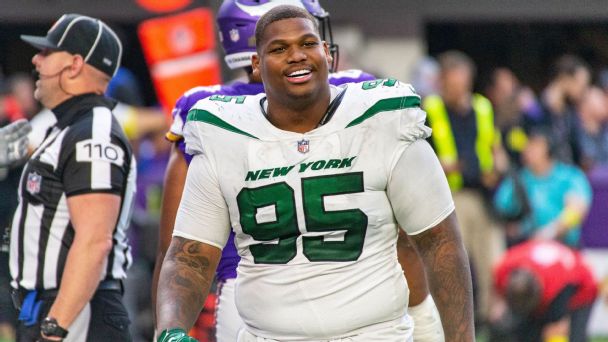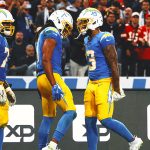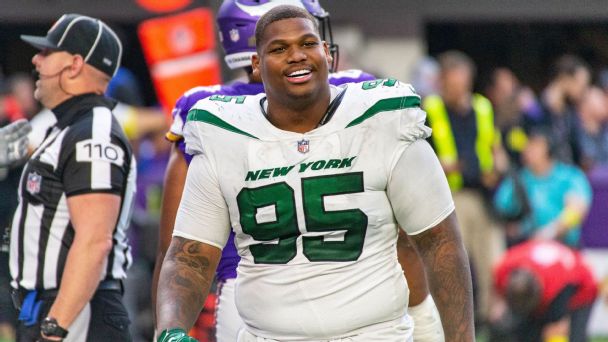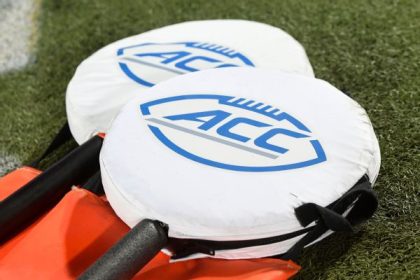
FLORHAM PARK, N.J. — While the New York Jets continue to bask in the afterglow of the Aaron Rodgers trade, one of their homegrown stars is stewing at home, feeling disrespected. That player is Quinnen Williams, who used the delete button on his phone or laptop to remind everyone there’s still a big piece of unfinished business in the Jets’ offseason. His abbreviated message:
Defensive tackle for ……………….
Williams changed his Twitter bio on Monday, scrubbing the Jets and unfollowing them on his social media accounts — the 2020s thing to do for professional athletes unhappy with their contract. Negotiations are moving at a glacial pace, relative to the defensive tackle market, raising two questions:
What’s next? How long will this drama last?
“He’ll get done,” coach Robert Saleh said 10 days ago on “The Rich Eisen Show.” “I’m not worried about that one.”
The Jets appear to be in no rush because they have Williams under contract for 2023 at a team-friendly $9.6 million (his fifth-year option), plus the franchise tag in 2024. Then again, the New York Giants were in the same position with Dexter Lawrence — another defensive tackle star from the 2019 draft — and they gave him a four-year, $90 million extension two weeks ago. That came on the heels of the Tennessee Titans‘ four-year, $94 million extension for Jeffery Simmons, another member of the Class of ’19.
Williams, watching his peers make major scores, wants his. Teammates want to see him rewarded. A few, most notably running back Breece Hall, have used an #extendQ hashtag on Twitter posts.
Williams could be aiming to become the highest-paid defensive tackle not named Aaron Donald ($31.7 million average annual value), which would mean eclipsing Simmons in AAV ($23.5 million) and fully guaranteed money ($47.8 million). Lawrence landed at $22.5 million in AAV and $46.5 million in full guarantees, so the market is clearly defined.
General manager Joe Douglas paints a rosy picture of the negotiations whenever asked by reporters. In his most recent comments, April 25, he said, “Still optimistic. Had a lot of positive discussions with Nicole [Lynn, Williams’ agent]. … I feel like we’re trending in a good place, so optimistic and hopeful is how I would describe that.”
That triggered a cryptic response from Williams, who tweeted the word “optimistic” with a gif of him sipping tea.
The reality is, the two sides aren’t close to an agreement. In the meantime, Williams is avoiding voluntary workouts, as he said he would. If he takes it a step further and skips the mandatory minicamp (June 13-15), he’d be subject to about $93,000 in fines, per the collective bargaining agreement.
The playbook for disgruntled players is to show up to minicamp to avoid the fine, report a sore back (or another convenient body part) and watch from the sideline in a silent form of protest. Chances are, the Jets, mindful of his time away from the team and football drills, wouldn’t make him practice anyway. Too risky.
Williams hasn’t commented since the end of the season, but his social media scrub said plenty, conjuring up memories of Jamal Adams and the 2020 offseason. Demanding to be the highest-paid safety, Adams vented on social media and eventually requested a trade in mid-June. The Jets said they had no plans to trade him, with Douglas claiming the plan was to make him a “Jet for life.” Life moves quickly in the NFL. Several weeks later, they traded him to the Seattle Seahawks.
Could Williams turn into Adams 2.0? The tenor of the Williams negotiations isn’t nearly as contentious as the Adams situation.
A trade request would be the nuclear option; there’s no indication Williams is even thinking about that. A trade would be counterproductive for the Jets, who are in a much different place than they were in 2020. Back then, they coveted draft capital, as they were in the midst of a roster teardown/rebuild. Adams brought back two first-round picks, which became guard Alijah Vera-Tucker and wide receiver Garrett Wilson, two of their better players.
The current Jets, with the 39-year-old Rodgers, are in win-now mode. A 2024 draft pick does them no good this season and there would be no way to adequately replace Williams, a first-team All-Pro and arguably the best player on their highly regarded defense.
That he plays a premium position, as opposed to Adams, also is a factor. Based on his track record, Douglas is more apt to allocate big money for a defensive tackle than, say, a safety. Conversely, the Jets have a reputation for not re-signing their own. They’re the only team that didn’t give a second contract to any first-round pick from 2012 to 2018.
Cap space shouldn’t be an issue for an extension. The Jets are $6.7 million under the ceiling, according to NFLPA data. They probably could create more room with an extension, as they would be able to lower Williams’ current cap charge ($9.6 million) by prorating bonus money over the length of the deal. They’re more than $40 million over the projected 2024 cap, but that can be remedied by restructuring Rodgers’ $107.6 million charge.
Williams, drafted third overall in 2019, is hoping to join a growing trend of former first-round picks receiving extensions. From the 2017 and 2018 drafts, 12 of the 20 defensive players whose fifth-year options were exercised landed contract extensions before their fifth season. That’s a stark contrast to the 2014-16 drafts. In those years, only four of the 31 defenders in that category got extensions.
All told, of the 35 players over those five drafts who didn’t get an extension from their original team, 11 were traded — a surprisingly high number. That includes two former Jets: Adams and defensive tackle Leonard Williams (New York Giants).
Quinnen Williams has said he wants to remain with the Jets because he likes his coaches and the direction of the organization. But he also said, “I want to be compensated for what I am.” The defensive tackle market is clearly defined, but based on the current pace, this could drag out into the summer.












